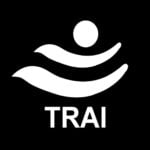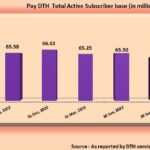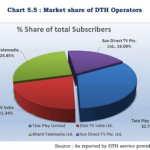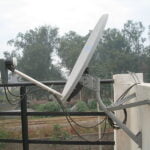As part of the recent amendments announced on 01-01-2020, yet another important change that the Telecom Regulatory Authority of India (TRAI) had announced to the New Tariff Order (NTO) was related to the Network Capacity Fee, widely known as NCF. In this article, we will review the data points that TRAI had analyzed in order to come up with amendments to the NCF. A few important points related to the NCF will be highlighted from the revised TRAI order.

Base NCF:
One of the biggest concerns with the NTO was the base NCF slab of Rs. 130 per month. As such many consumers felt that it was too high and they are being overcharged. TRAI has discussed this issue about the base NCF with all the stakeholders as part of the consultation process. Options like variable NCF and reduced NCF were elaborately considered. However, TRAI has decided to keep the base NCF unchanged from Rs. 130 for the below-mentioned reasons. Quoting from the new order.
An analysis of data available in the annual reports /quarterly reports of DPOs and data made available by them suggests that the cost of distribution network capacity to provide the signals of television channels to a subscriber is not more than Rs. 130/-.
There is variation in the cost structure of TV services being provided through cable, depending upon the scale of operations, area of operations, etc. and which can’t be overlooked. The network cost for large MSOs could be lower compared to smaller MSOs. In DAS-III and DAS-IV areas, a large number of smaller MSOs are providing services to a small number of subscribers. There is cost variation in urban vs rural areas. Similarly, there are cost variations in servicing multistory buildings vis-a-vis standalone houses. Therefore, the Authority has decided to continue with the existing uniform cap of Rs.130 per month on NCF, despite the cost variations existing across operators/areas of operations. This measure is required especially to protect the interest of MSOs, especially of smaller MSOs and the MSOs operating in rural/difficult areas. This amount being a ceiling, the MSOs are at liberty to declare lower NCF.
What does this mean:
The authority also needs to consider the smaller MSOs operating in villages and rural areas. They might be having a very fewer number of connections and their only source of revenue in the New Tariff Order is the NCF. For example, if a small MSO operating in a village is providing 20 connections, and TRAI mandates the NCF to be lower, like Rs. 50 per month or variable, based on number of channels that the consumer opts for, such MSO’s earning per month will take a severe beating i.e. 20*50=₹1000 or might even be lesser if it’s variable. This slab of Rs. 130 will protect such MSOs and ensure they have a minimum revenue of 20*130=₹2600.
Moreover, TRAI has only set the maximum cap at Rs. 130 per month. There is no restriction on the DPOs who are having a large customer base to reduce their NCF. In fact some DPOs like Airtel, Sun Direct provide discounts on their NCF collecting around Rs. 80 per month, if the consumer opts for their curated packs. Some DPOs like TACTV have cut the NCF to just Rs. 35 for it’s curated pack and Rs. 120 for customer selected packs. So, it has to be the DPOs who need to be customer friendly and reduce the NCF depending on their customer base. TRAI, as an authority, needs to be fair to every stakeholder and that’s why they have set it at Rs. 130.
Base NCF – Unchanged at Maximum of Rs. 130 per month
The number of channels in the basic NCF slab and additional slabs:
In the NTO, TRAI had initially set a slab of 100 channels at Rs 130 per month as the base NCF. Anything more, consumers had to buy extra NCF slabs at 20 rupees for every 25 channels thereafter. TRAI had analyzed the data after the NTO was implemented and identified the below points.
1. Many subscribers are subscribing channels in excess of 100, one cause factor being the marketing of channels as bouquets over a-la-carte
basis
2. Many DPOs are not charging additional NCF beyond 100 channels.
3. Several DPOs are offering many FTA channels without charging any additional NCF.
4. The average NCF realized from the subscribers is less than Rs. 130/- and the number of channels provided to a subscriber is more than 200.
See the below table prepared by TRAI from the data submitted by the DPOs.

From the above data, it is clear that most of the DPOs have reported that the average number of channels being subscribed is 200 or more within the initial NCF slab of Rs. 130.
Accordingly, the Authority has decided that the DPOs shall offer 200 channels for the base NCF of Rs. 130/- and excluded the mandatory DD channels from this count. This effectively means 226 channels should be available to the consumers in the initial NCF slab of any DPO!
Since the initial slab itself now mandates the DPOs to offer 226 channels, the existing slab based system of NCF in which consumers had to pay an additional Rs 20 for every 25 channels proved to be inconsequential. TRAI has noted that on any platform generally on an average 300 relevant channels are available for viewing by a consumer. Therefore, TRAI decided that a ceiling of Rs 160 per month on NCF should suffice for more than 200 channels. Hence, the existing provision for additional NCF of Rs.20 for every slab of 25 channels has been removed and a maximum ceiling of Rs. 160 per month has been set. In summary, there will be just two slabs now.
Initial slab at Base NCF – 226 channels including mandatory DD channels for a maximum of Rs. 130 per month.
Ceiling – All the channels on the platform for a maximum of Rs. 160 per month.
Multi TV NCF:
Another aspect that was widely criticized in the NTO was the NCF on the secondary connections within the same house. Though some of the DPOs were providing discounts for Multi TV users, DPOs like Tata Sky were charging full NCF, even on the secondary connections. After carefully analyzing the data, TRAI came up with an amendment to this. TRAI has decided that the DPOs shall not charge more than 40% of declared NCF for the first TV connection, per additional TV for 2nd TV connection and onwards in a multi TV home. For example, if the NCF on the primary connection is Rs. 100 per month, the NCF on the secondary connection would be Rs. 40 per month. TRAI has reiterated in the new order that the DPOs should allow multi TV home subscribers to choose a different set of channels for each TV connection. TRAI has also enabled the DPOs to ask the subscribers to furnish relevant documents before offering any discount on multi TV homes.
Multi TV NCF – Not more than 40% of the declared Primary NCF.
This is the background of TRAI’s revised NCF conditions. In summary, below are the main changes with respect to NCF.
1. No change in the initial NCF slab i.e. the maximum ceiling of Rs. 130 per month for this slab.
2. Total NCF can’t be more than Rs. 160 per month.
3. Initial NCF slab will offer 226 channels, including mandatory DD channels.
4. All the channels on the platform should be offered at a maximum NCF of Rs. 160 per month.
5. Multi TV NCF is set at 40% of the declared primary NCF.
Note: All the prices are excluding GST and an 18% GST will be applicable above the prices mentioned.
What do you think of the changes announced by TRAI to the NCF slabs? Do you think the amendments are consumer-friendly? Let us know in the comments section.









In fact, most customers dont need or use more than 15-20 channels from NCF list. There should be a flexibility to choose 40-50 (a limited number) from both categoriess so as to ensure that a connection cost does not exceed ₹130 plus GST per month.